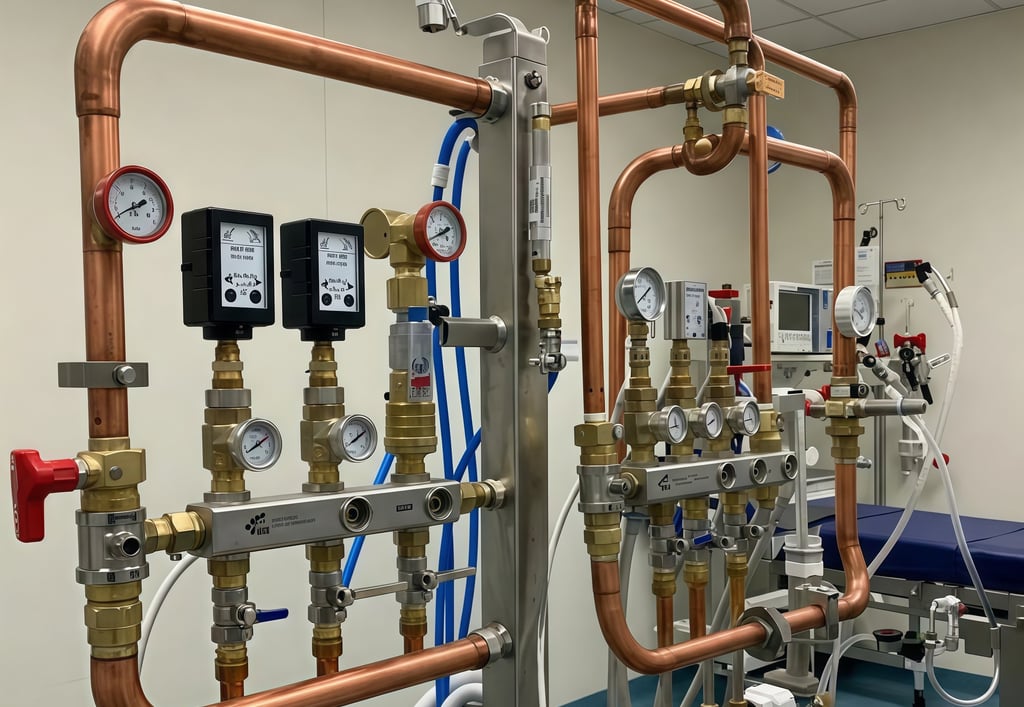Embracing Sustainable Solutions for Healthcare Pipelines
10/13/20252 min read


Introduction
In the rapidly evolving landscape of healthcare, the need for sustainable solutions is more pressing than ever. As the demand for medical devices rises, so does the importance of ensuring that healthcare pipelines operate not just efficiently but also responsibly. This begins with embracing sustainable practices within the manufacturing and distribution of medical gas pipelines (MGPs). This article explores how we can build a greener future through innovative designs and practices.
Building a Greener MGPs
The journey towards sustainability in healthcare pipelines involves several key strategies aimed at improving both the environmental impact and operational effectiveness of MGPs.
1. Energy-efficient Compressors
Energy consumption remains one of the largest contributors to the carbon footprint of healthcare operations. By integrating energy-efficient compressors into the design of medical gas pipelines, healthcare facilities can significantly reduce their energy usage. These advanced systems are designed to minimize the amount of electricity consumed while delivering the necessary flow rates for medical gases. Choosing compressors that meet or exceed energy efficiency standards not only lessens environmental impact but also generates cost savings over time.
2. Leak-proof Designs
Leaks in medical gas pipelines can lead to wastage of precious resources, threatening both operational efficacy and environmental sustainability. Implementing leak-proof designs is essential in ensuring that gases are delivered without loss. This can be achieved through high-quality seals and optimal joint designs that withstand the pressures inherent in medical gas delivery systems, thereby contributing to the overall integrity of the system.
3. Durable Materials
The choice of materials used in MGPs plays a crucial role in their sustainability. By utilizing durable and recyclable materials, healthcare providers can ensure that their pipelines last longer and meet rigorous performance standards. For instance, high-grade stainless steel and other corrosion-resistant materials not only extend the lifespan of medical gas pipelines but also reduce the frequency of replacements, thereby lowering waste and overall resource consumption.
4. Smart Monitoring
Incorporating smart monitoring technology is another transformative approach in promoting sustainable solutions. Advanced sensors and monitoring systems allow for real-time tracking of gas usage and system performance. By providing insights into operational parameters, healthcare facilities can optimize gas usage, promptly identify leaks, and predict when maintenance should be performed. This proactive approach could dramatically enhance efficiency and sustainability within healthcare pipelines.
Why It Matters?
Shifting toward sustainable solutions in healthcare isn’t merely a trend; it represents a commitment to the health of our planet and future generations. As healthcare facilities strive to improve their environmental footprint, embracing the above strategies will not only foster sustainability but will also enhance patient care through reliable and efficient systems.
The Medevice Approach
At Medevice, we prioritize sustainability above all. We believe that every breath delivered through our healthcare pipelines should support life while respecting the planet. Our commitment drives our innovation, ensuring our MGPs are smart, safe, and sustainable. By integrating energy-efficient compressors, leak-proof designs, durable materials, and smart monitoring, we set a standard for what the future of healthcare should look like.
Final Word
The future of healthcare isn’t just high-tech — it’s responsible, efficient, and sustainable. As we advance, let's ensure our commitment to these principles guides every development, with sustainability as the cornerstone of healthcare innovation. At Medevice, we are dedicated to making a difference, one medical gas pipeline at a time.
Services
© 2024. All rights reserved.
Products


We're Making it easier to find Better Medical Devices
Find us on Map:
Contact Information
Phone: +91 9029457428 | +91 9833236604 | +91 7506374381
Email : medevices2018@gmail.com | sales@medevices.in
